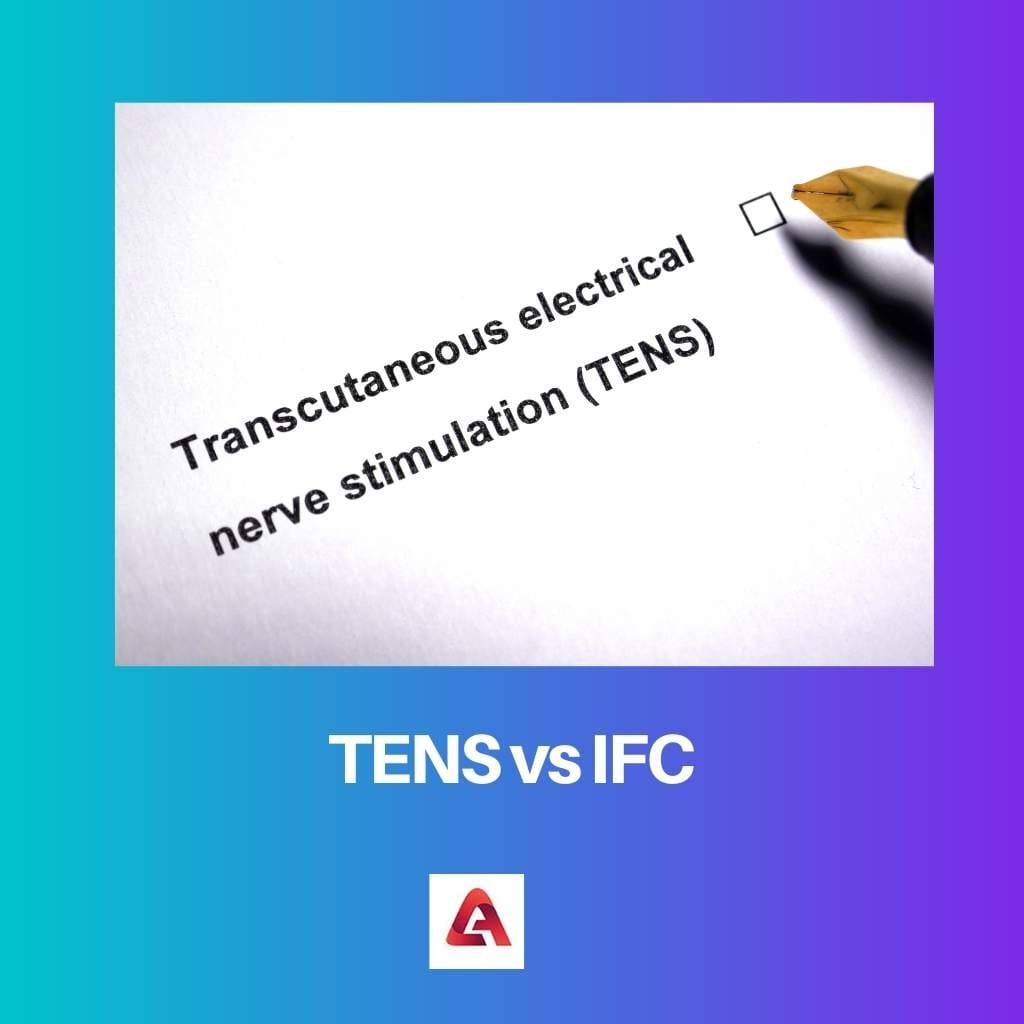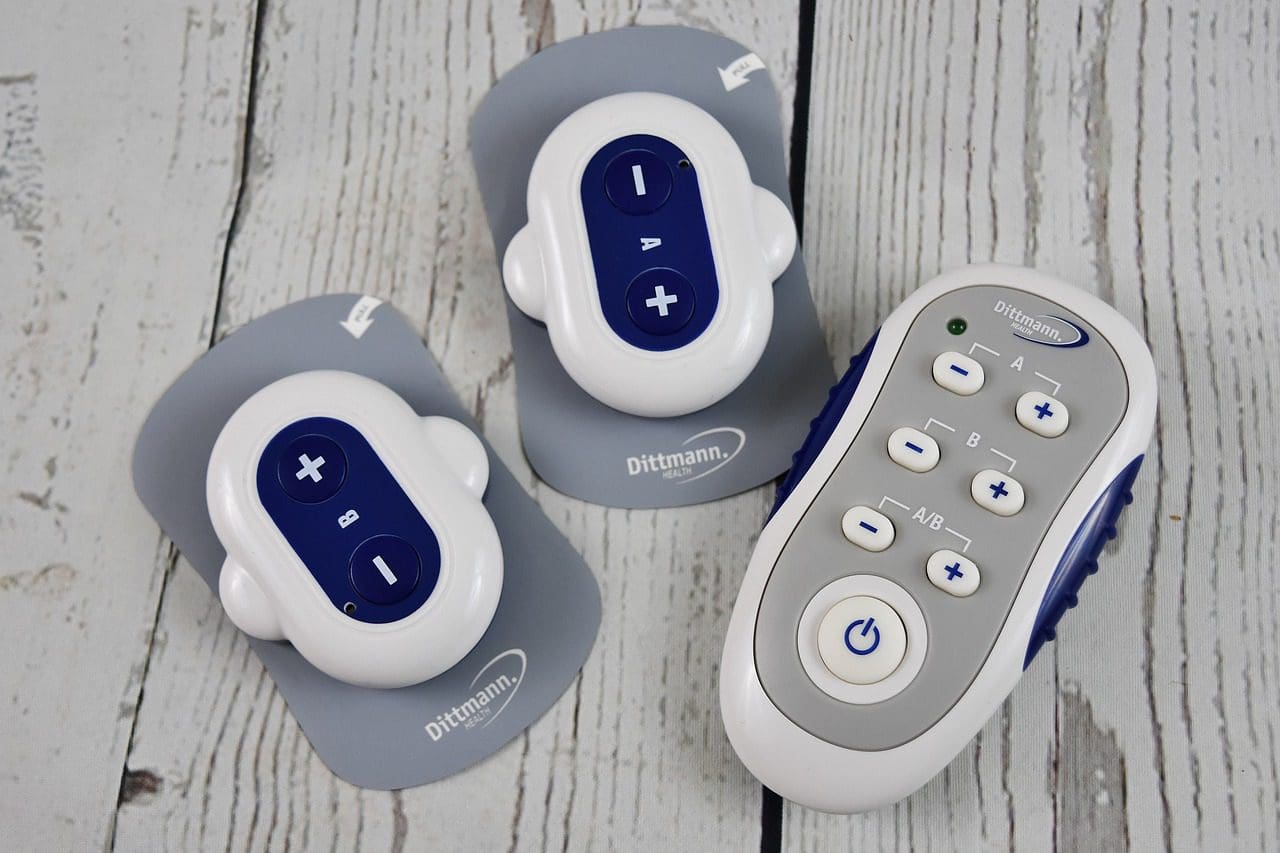TENS and IFC are updated technologies used for treating patients suffering from chronic diseases. This kind of technology is also called electrotherapy. Both these work by sending stimulation into the person’s body through mild currents to the electrodes into our body.
Key Takeaways
- TENS uses low-voltage electrical current to alleviate muscle pain, whereas IFC utilizes high-frequency electrical current to relieve muscle pain.
- TENS is used for acute and chronic pain management, while IFC is commonly used in sports medicine, orthopaedics, and physical therapy.
- TENS pads are placed directly on the skin, while IFC requires special electrodes to penetrate the skin and reach deeper muscle tissues.
TENS vs IFC
TENS helps in stimulating the current that is generated, which initially flows through the electrodes of the body to replace certain parts of a body. On the other hand, the IFC helps convert the stimulation received at the point joining near the electric end into electrodes.

TENS is the short form of Transcutaneous electrical nerve stimulation. This device is a simple device that runs on a battery which helps treat a patient’s pain.
This device emits low frequencies of electrical current to the body, which helps to push to the nerve and reduce pain. This method helps reduce pain and improves blood circulation in a person’s body.
Comparison Table
| Parameters of Comparison | TENS | IFC |
|---|---|---|
| Full form | The complete form of TENS is Transcutaneous electrical nerve stimulation. | The complete form of IFC is Interferential current. |
| Meaning | TENS helps stimulate the generated current, which initially flows through the electrodes of the body. | The IFC helps convert the stimulation received at the point joining near the electric point into electrodes. |
| Function it performs | The TENS helps in the stimulation of producing endorphins. | The IFC helps in the stimulation of blood circulation in the body. |
| Radiations transmitted | The TENS ship low frequencies ranging up to 125 HZ. | The IFC transmits a high frequency of up to 4000 HZ. |
| Focus | TENS focuses on only reducing pain in a person’s body. | IFC focus on the healing process of restoring tissues in a person’s body. |
What are TENS?
TENS is the short form of (Transcutaneous electrical nerve stimulation). This device is a simple device that runs on a battery which helps treat a patient’s pain.
This treatment is performed only after all other painkillers and medicines are tried on and have no effect on treating pain in a person’s body. This device can be controlled alone by the person using it without help from a doctor at home.
This device is performed on a person’s body to treat pain related to joints, pain during labour, pain after the surgery, and pain in a person’s back or neck.

What is IFC?
IFC is the short form of Interferential Current. This device is used to treat patients having psychopathic disorders. This device emits low frequencies of electrical current to the body, which helps to push to the nerve and reduce pain. This method helps reduce pain and improves blood circulation in a person’s body.
The currents emitted from this device are left at the place where the person feels the pain in the body. As soon as this is practised, stimulation occurs between a person’s nerves and his tissues.
Apart from depression, this device is also used for treating pain related to muscles, joints, soft tissues, etc. This also treated minor pains related to migraine and post-surgery pain.
Main Differences Between TENS and IFC
- TENS focuses on only reducing pain in a person’s body, and on the other hand, IFC focuses on the healing process of restoring tissues in a person’s body.
- TENS helps stimulate the generated current, which initially flows through the electrodes of the body. On the other hand, the IFC helps convert the stimulation received at the point joining near the electric point into electrodes.


The detailed description of TENS and IFC is quite enlightening. This article serves as a valuable resource for those seeking information about these treatment options.
Absolutely, Moore. The article offers comprehensive insights into the technical aspects of TENS and IFC.
It is interesting to see how TENS and IFC differ in their applications and working mechanisms. Advanced technology indeed!
Yes, I found it fascinating too. The comparison table is well structured and provides a clear overview of the two techniques.
This article humorously decodes the intricacies of TENS and IFC, making it an engaging read for laypersons and professionals alike.
Absolutely, Nicole. The article’s engaging narrative style is a refreshing take on the technical subject matter.
I couldn’t agree more, Nicole. The article’s wit and humor add a unique dimension to the discussion of electrotherapy technologies.
The in-depth comparison between TENS and IFC is insightful. This article contributes to a better understanding of electrotherapy technologies.
Absolutely, Jonathan. The article’s analytical approach to highlighting the differences is beneficial for readers.
The information on TENS and IFC is valuable, but I believe the article could benefit from more interactive visuals to engage the readers effectively.
I agree with you, Adams. Visual aids would enhance the overall presentation of the content.
The lack of interactive visuals is indeed a missed opportunity when it comes to explaining these complex technologies.
I appreciate the comparative analysis between TENS and IFC. It helps in understanding the unique functionalities and applications of each technology.
Indeed, understanding the differences between TENS and IFC is crucial, and this article does an excellent job of explaining it.
This article provides very detailed information on TENS and IFC technologies used to treat chronic diseases. It is very reliable and can be very helpful for patients who need these therapies to control their symptoms.
I agree with you, Katie. This article is an excellent source to understand TENS and IFC.
The article’s elucidation on TENS and IFC is quite comprehensive. It offers valuable insights for individuals interested in these therapeutic modalities.
I concur, Noah. The comprehensive nature of the article makes it a valuable resource for anyone seeking knowledge about TENS and IFC.
The detailed information is indeed beneficial, Noah. It provides a holistic view of the applications of TENS and IFC.
While the article effectively explains TENS and IFC, I would have liked to see some real-life case studies to provide practical context for the readers.
I share your sentiment, Olivia. Case studies could enhance the practical understanding of these treatment methods.
The article presents a clear distinction between TENS and IFC. The information provided is well-detailed and informative.
I couldn’t agree more. The article’s clarity in explaining complex concepts is commendable.